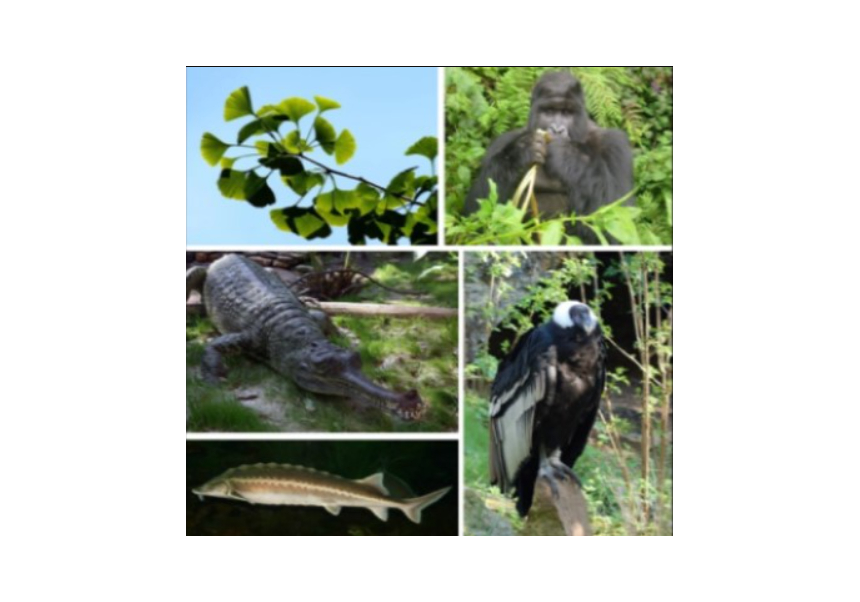
A study shows that large, long-lived and low-fertility living beings at risk of extinction are responsible for 80% of the functional diversity in the planet's ecosystems.
The work is published in the journal Science Advances by an international consortium with the participation of the Desertification Research Center (CIDE, CSIC-UV-GVA).
The accelerated rate of species extinction could jeopardize the health of ecosystems around the planet. This could be due, among other causes, to the impact of the extinction of certain species whose role is key in maintaining the functions and services that ecosystems provide. This is the main conclusion of a study published in the prestigious journal Science Advances by an international consortium in which Francesco de Bello, researcher at the Desertification Research Center (CIDE), a joint center of the Spanish National Research Council (CSIC), the University of Valencia (UV) and the Generalitat Valenciana (GVA), participates. To this end, they have analyzed the functions of 75,000 species, whether plant or animal, of the more than one million considered in danger of extinction, estimating their importance in the functioning of terrestrial ecosystems.
The work is led by University of Tartu (Estonia) researcher Carlos Carmona, of which Francesco de Bello was a former supervisor, and demonstrates that the extinction of species considered endangered by the International Union for Conservation of Nature (IUCN) would significantly modify, on a global scale, the range of functions performed by plants, mammals, birds, amphibians, reptiles and freshwater fish in ecosystems.
From shrews and duckweed to blue whales and redwoods, animals and plants exhibit extraordinary variability in their functional and morphological characteristics, including wide differences in size, weight, shape, or reproductive capacity. These characteristics determine the role that species play in ecosystems, and also how they respond to the different impacts of global change.
The equilibrium of ecosystems does not depend, therefore, only on the number and variety of species that compose them and their relationships, but also on the role played by the different species in maintaining this equilibrium. This functional diversity implies considering that not all species have the same role and that different species may intervene in the different processes that take place in ecosystems and may play different or similar roles.
Thus, some particular functions performed by a taxonomic group, such as plants, mammals or freshwater fish, may be redundant among many species or only supported by a few. If these functions are highly redundant, it is unlikely that the extinction of part of the species will strongly affect the functions of the whole group. Conversely, if certain functions are performed by one or a few species, their disappearance will lead to a reduction in the overall range of functions.
One million species in danger of extinction
In the current context of global biodiversity decline, with an estimated one million species in danger of extinction, it is important to determine to what extent these extinctions will alter the functional characteristics of plants and animals. Through the analysis of phylogenetic information and various functional traits (morphological, physiological and phenological characteristics) of more than 75,000 species, the global functional spectrum of each of the groups studied has been characterized.
“We used functional trait information from 39,260 vascular plant species, 4,953 mammals, 9,802 birds, 6,567 reptiles, 6,776 amphibians and 10,705 freshwater fish from different published databases. For each of these groups, we chose a set of fundamental functional traits associated with different key aspects of their ecology,” explains CIDE researcher Francesco de Bello.
According to this work, more than half of the species are responsible for less than 20% of the functions performed by these groups, which implies that 80% of the remaining functions are performed by few species, with unique functional characteristics, of which there are not many other functionally redundant species. Over the next century, if extinctions are in line with IUCN predictions, functional decline would be between 0.3% (for reptiles) and 5.1% (for freshwater fish). While this decline remains limited, it would be accompanied by a significant increase in the range of functions supported by a single species (from 17 to 23% depending on the group), increasing the impact of future extinctions.
More vulnerable to future extinctions
Given that the risk of extinction is not distributed randomly, but rather it is the species with larger sizes, great longevity and late sexual maturity that are much more likely to be threatened, “their extinction would cause notable reorganizations in the functional spectra of most groups, making them more vulnerable to future extinctions in the future,” concludes Carlos Carmona, head of the research.
Moreover, “if extinctions occur faster than expected, there will be a marked increase in global functional decline, which seems likely given the current acceleration of changes on a planetary scale,” warns the researcher from the University of Tartu. In this sense, this type of research may be of great interest for biodiversity management and conservation policies.
Reference:
Carlos P. Carmona, Riin Tamme, Meelis Pärtel, Francesco de Bello, Sébastien Brosse, Pol Capdevila, Roy González-M., Manuela González-Suárez, Roberto Salguero-Gómez, Maribel Vásquez-Valderrama, Aurèle Toussaint (2021). Erosion of global functional diversity across the tree of life. 26 Mar 2021: Vol. 7, no. 13, eabf2675. DOI: 10.1126/sciadv.abf2675.
CIDE Communication









